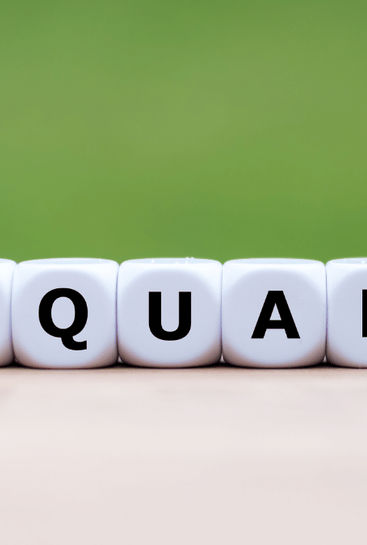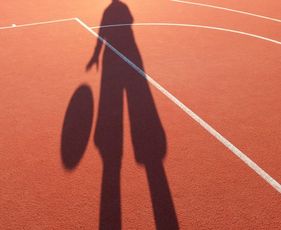If you know anything about sports, you’d know that right now, the highest earning players, regardless of the sport, are all men. According to Forbes, only two women in 2022 cracked their highest earning athletes of the year. Those women? Naomi Osaka, and Serena Williams. Both tennis players earned $59.2 million and $45.3 million, respectively. That’s two female players out of thousands around the world. But this goes far deeper than who’s the highest earning sports player, as the pay disparity is staggering even at lower levels.
So how did the fight for equal pay begin? And after all this time, how and where is it going? Let’s take a look.
Where It Began
The true fight for equal pay for women athletes didn’t really start until halfway through the 2010s. Then, in March 2016, five women from the US Women’s National Team went after the US Soccer Federation. Their allegation was that the USSF violated federal antidiscrimination laws such as the Equal Pay Act. Their demands were simple enough, pay them what the USSF paid the US Men’s National Team. This created a ripple effect that continues demonstrating itself to this day as more and more egregious pay disparities become negative press for sports teams around the country, well beyond the borders of the United States.
The Ripple Effect
Thanks to US Women’s National Team players Alex Morgan, Carli Lloyd, Becky Sauerbrunn, Hope Solo, and Megan Rapinoe, pay equity became a top priority for women’s teams everywhere.
2017
In March 2017, following in the US Women’s National Team’s footsteps, the USA Women’s Hockey Team threatened a strike due to unequal pay. Their efforts were successful, and a deal was reached. These hockey players walked away with salary increases, increased per diem, performance bonuses, improvements to travel accommodations, and even an advisory group to promote growth in the sport.
2018
The ripple effect even reached the oceans when the World Surfing League (WSL) announced that the prize money would be equal between male and female athletes for any events controlled by the WSL. This was the first US-based global sports league to achieve prize money equity nationally and was among the first internationally.
The World Tennis Association (WTA) made some progress in December 2018 when they changed rules and stopped penalizing women for taking leave due to pregnancy, recent childbirth, or both. This was only after allegations were made public by Victoria Azarenka and Serena Williams. While unrelated to pay equity, it was still worth noting that this fight has many avenues that need addressing.
2019
2019 saw an increase in female athletes demanding fair treatment and pay. Starting in May, a group of Track and Field stars began speaking out about inequitable treatment they’d received. This was in relation to their recent or, at the time, ongoing pregnancies which cost them endorsements decreasing or being dropped altogether. This exploded online and even prompted changes from major brands like Nike to reverse course and change their stance on continuing to endorse pregnant athletes.
In September, Governor Gavin Newsom of California signed the California Equal Pay to Play Act into law. This law mandated that organizations that hosted both men’s and women’s competitions that were hosted within California on public lands had to equally compensate athletes regardless of gender.
In December, the WNBA and its players were in the thick of negotiations for better salaries, improved benefits like travel accommodations, per diems, postseason job opportunities, and more.
2020
In 2020, Naomi Osaka earned her spot on the Forbes list of highest-paid athletes and the highest-earning female athlete and female tennis player. Since the 1990s, when Forbes began their annual ranking, Osaka became the first female to ever make the Forbes list. Serena Williams would soon join her.
2021
Alpine Skiing began awarding equal prize money to all skiers in January 2021. Overall there remains a pay gap in the sport, as the average female skier makes $134,345 while the men make an average of $144,744. However, this was a positive step forward for the FIS World Cup.
In June 2021, both female and male tennis players called for merging the Association of Tennis Professionals (ATP) and the Women’s Tennis Association (WTA) tours. While not all tennis players advocate for this, it was becoming more common for both genders to make the call.
2022
One of 2022s highest profile examples of pay equity disputes is the Women’s National Teams’ legal battle with the Soccer Federation. This might sound familiar, and that’s because this was what started it all. This legal battle had been raging for over six years and has only recently been resolved. The lawsuit ended with the US Soccer Federation pledging to facilitate pay equity amongst its players while also paying back pay to make up for years of inequitable pay, and changes across the board. Overall this was a major win for pay equity. Still, it’s a drop in the bucket as this problem remains rampant both around the country and across the globe.
How’s It Going?
Progress is often slow. Change is often only done when hands are tied and there’s no other option. However, it has to be noted that female athletes aren’t sitting down and keeping quiet any longer. The last decade has proven something: the value of female sports players. They’re aware of what they’re worth and call out their own sports for deep-rooted sexism and misogyny.
No longer are women afraid to demand they get what they’re worth. This isn’t just monetarily. Female athletes are demanding much more than just equal pay. They also want improvements to accommodations, air time, endorsement deals, training facilities, and overall treatment.
Where Are We Heading?
Many sports associations and federations are looking to make things right. However, once again, progress is slow. While the needle is moving in the right direction, some sports will not see significant progress for years to come. For example, estimates have female golfers only matching male earnings by 2026. Likewise, based on current salaries, women hockey players will not see pay equity for a very long time. The estimates sometimes go into the hundreds of years from now.
Things can change as the pressure grows on these sports and their respective associations, federations, clubs, etc. Numerous cases are currently making their way through the judicial process, which could demand immediate changes. Only time will tell how they pan out.
Who’s Leading The Charge?
There are a lot of people involved in fighting for pay equity. However, no one person or group of people is leading the charge. If anything, all female athletes are leading the charge by voicing their disappointment and frustration with how their respective sports value them as players.
Considering the fight started in 2016, it’s only growing stronger year by year. So who knows where we’ll be by 2026, precisely a decade since the battle for pay equity began.
Conclusion
The last six years have shown that women are tired of earning far less than their male counterparts. Pay equity is an issue that extends far beyond the bounds of sports. This is a fight countless women experience in almost every job position. With every passing day, the voices demanding pay equity grow louder, and soon you won’t be able to ignore them any longer.





